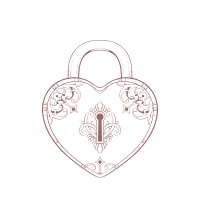
The Rhythms of Life: Insights into Human Biorhythms
Delve into the fascinating world of human biorhythms to discover how these natural cycles impact your daily life and well-being.
article by Adrian Wallace
Introduction to Biorhythms
Biorhythms are considered to be the invisible waves of energy that govern our lives, affecting our physical, emotional, and intellectual states. The concept of biorhythms is rooted in the idea that our lives are influenced by rhythmic biological cycles. While not scientifically proven to hold predictive power, biorhythms remain a topic of interest for those seeking to harmonize with their innate patterns. The theory emerged in the late 19th century and continues to intrigue individuals looking to optimize their well-being in tandem with these cycles.

The Three Core Cycles
Fundamentally, the biorhythm model is founded on three primary cycles: the 23-day physical cycle, the 28-day emotional cycle, and the 33-day intellectual cycle. Each of these has a distinct influence: the physical cycle is said to impact strength and coordination, the emotional cycle governs mood and creativity, while the intellectual cycle affects logic and analytical abilities. Proponents suggest that by tracking these cycles, one can better plan activities in accordance with high and low phases to improve performance and emotional states.

Tracking Your Biorhythms
With technological advancements, monitoring biorhythms has become more accessible. Numerous apps and online platforms now offer personalized biorhythm charts based on your birth date. These tools provide insights into your current cycle phases, potentially helping you to make informed decisions about important events, assess compatibility with partners, or even identify potentially auspicious days for critical tasks. It is, however, important to approach these insights as complementary rather than determinative.

Biorhythms and Daily Life
The practicality of biorhythms lies in their potential to serve as a guide for daily activities. Consideration of one's emotional and intellectual rhythms might be particularly useful when planning social engagements or intellectually demanding tasks. For example, scheduling a presentation on a day when one's intellectual rhythm is at a peak could yield better results. Likewise, understanding one's physical cycle might influence workout intensities or recovery periods.

Skepticism and Research
Despite enthusiasm from some quarters, the scientific community maintains a skeptical stance regarding biorhythms, largely due to a lack of empirical evidence. Critics argue that any perceived benefits or accuracies of biorhythm predictions can be attributed to the placebo effect or cognitive biases. Research on biorhythms is limited, and studies conducted to date have not provided robust support for any predictive validity. Nonetheless, many individuals find personal value in the framework as a tool for self-reflection and life management.
Biorhythms in the Modern Age
As we move further into the 2020s, the allure of biorhythms persists amidst a culture fascinated by self-optimization and personalized health trends. While the science may not yet substantiate the claims of biorhythm theory, the ongoing discussion underscores a universal desire to understand the forces that influence our daily lives. It is this curiosity that keeps the conversation around biorhythms alive, inviting us to explore the rhythmic patterns that, at the very least, offer a novel perspective on the ebbs and flows of human existence.
Published: 1/30/2024
Modified: 1/30/2024
More predictions
Come back here soon to learn more about yourself and your future


The Rhythms Within: An Insight into Biorhythms
Discover the science and philosophy behind biorhythms, the cyclical patterns our bodies follow, in connection with our physical, emotional, and intellectual states.


Sync Your Cycles for Harmony With Biorhythms
Delve into the synchronization of personal biorhythms to enhance relationship compatibility and understand its role in fostering deeper connections.


A Guide to Biorhythms Journey
Embark on a journey of self-discovery through the science of biorhythms to optimize your life's potential.